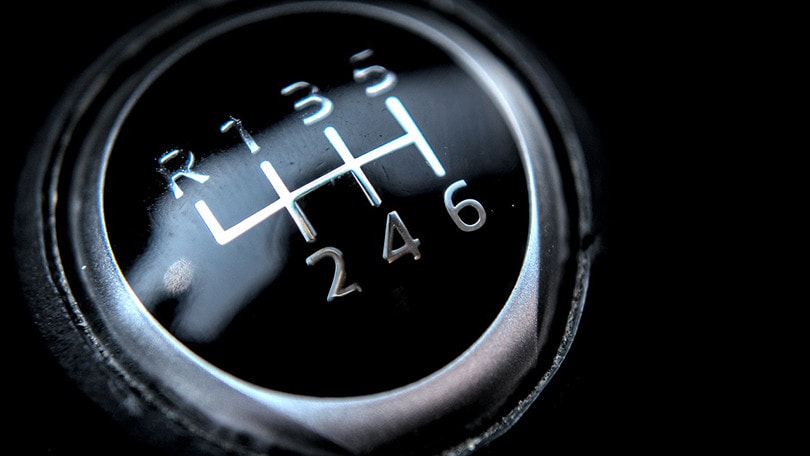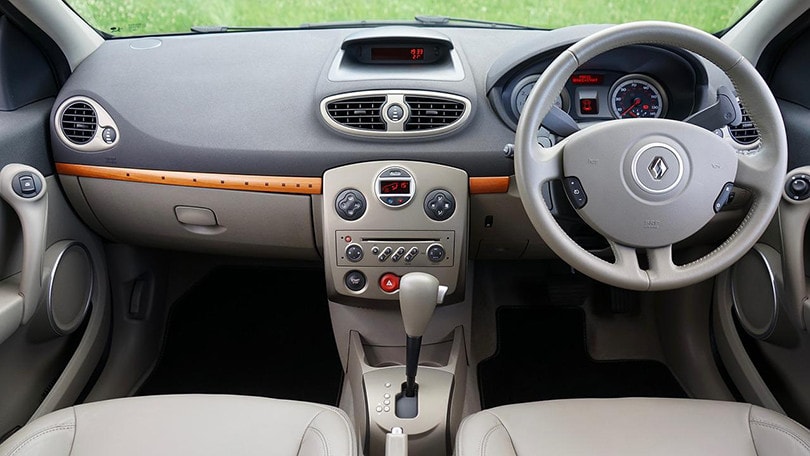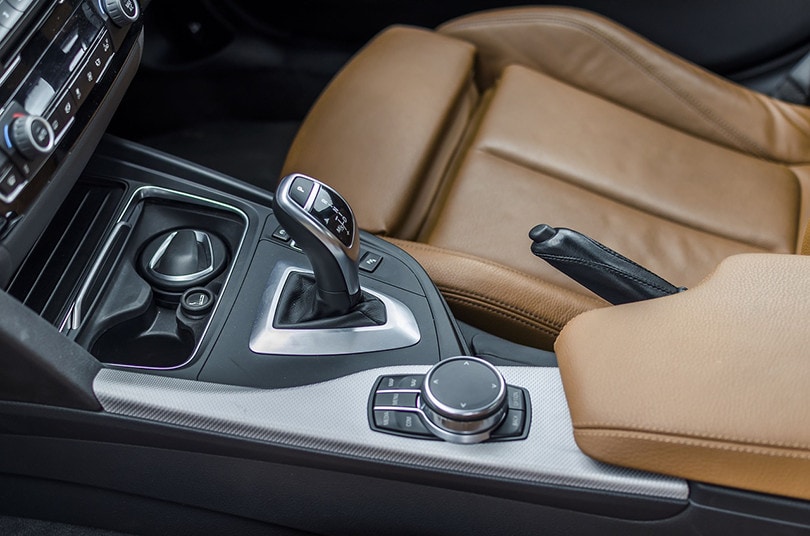Manual vs. Automatic Transmission: Pros, Cons & FAQs
-

- Last updated:

If you have ever sat down in an unfamiliar car and discovered it was a stick shift, you are not alone. The sight of a stick shifter in a car can fill people with apprehension, anxiety, and dread. Most people don’t know how to drive a stick shift anymore. Most cars nowadays have automatic transmissions. But what exactly is the difference between manual and automatic transmissions? Is one better than the other? This guide will cover all of the pros and cons of stick shifts and automatic transmissions, as well as frequently asked questions and information about when to choose one or the other.

Overview of Manual Transmission

The colloquial term for a manual transmission car is a stick shift. Stick shifts used to be far more common than they are today. Manual transmissions are no longer common in the United States. According to recent surveys, manual transmissions only make up around 3% of cars in the United States. Today, manual transmissions mostly exist in commercial vehicles and racecars rather than regular cars. However, manual transmissions are still extremely popular among a niche portion of drivers, and they exist in many early model cars.
Despite the fact that they are rare in the United States, manual transmissions are still popular around the world. Over 80% of global vehicles are still stick shift, so learning how to drive one can be beneficial for international travelers. Manual transmissions also have a lot of benefits that elevate them over automatic transmissions.
How Manual Transmissions Work
Manual transmissions take inputs from the driver and directly translate that input to the gearbox to switch gears. Manual transmissions have three main components, the gearbox itself, the shifter, and the clutch. To prime the transmission for shifting, the driver must press the clutch, which is usually a pedal on the floor of the vehicle near the brake pedal.
Once the clutch is pressed, the gears in the transmission disengage from the engine which allows them to be shifted. With the clutch, the driver then uses the shifter in the center console to manually change the gears. The shifter is connected to the gearbox, and the driver’s manual physical input changes the gears in the transmission.
Benefits of Manual Transmissions

Manual transmissions have some benefits over automatic transmissions. The primary benefits of a manual transmission are related to durability and longevity. Manual transmissions can last far longer than automatic transmissions. Some manual transmissions can last up to 300,000 miles or more. Manual transmissions are also easier to maintain and cheaper overall than automatic transmissions. Manual transmissions are cheaper to replace, cheaper to upkeep, and can be cheaper to buy in a new vehicle.
Some drivers like the feeling of a manual transmission over an automatic transmission. A good driver can switch gears much faster than an automatic transmission which allows for faster acceleration and finer control over the vehicle. Some drivers also like the feeling of control that a manual transmission gives them over an automatic transmission.
However, learning to drive a manual transmission effectively can be frustrating and difficult. The main barrier to entry for manual transmissions is the learning curve associated with learning how to drive them.
When To Choose a Manual Transmission
There are a few situations when a manual transmission will be more appealing than an automatic transmission. If you are looking for a cheaper gearbox to maintain for longer, a manual transmission is going to be a much better choice than an automatic transmission. If you learned how to drive a stick shift when you were young and are confident in your manual transmission skills, then choosing a manual becomes a lot easier.
If you want a more durable gearbox, something that is easier to maintain, and an engine that can potentially last longer than an automatic, then manual transmission cars could be a great choice. Manual transmissions also historically have better gas mileage than automatic cars. However, with the development of better continuous variable transmissions, that gap has closed significantly in recent years.
- Cheaper to upkeep than automatic transmissions
- Can last hundreds of thousands of miles
- Some find manual transmissions more fun to drive
- Hard to learn how to drive
- Small market share reduces the resale value

Overview of Automatic Transmission

Automatic transmissions are the most common type of transmission for cars in the United States. Over 95% of all cars and SUVs in the United States feature automatic transmissions as opposed to manual transmissions. Automatic transmissions do not need any input from the driver in order to change gears. The engine dictates the gear level in the transmission based on pressure, power, and rotations per minute (RPM), independent of the driver.
Automatic transmissions have continued to dominate the market because they are easy to use and require no special attention on the part of the driver. This makes driving simpler and more accessible than it was in the past, which makes cars appeal to a broader audience.
How Automatic Transmissions Work
The most common type of automatic transmission uses hydraulic power to change gears. When a car is put into drive, it engages all of the forward gears and preps them for use. As a car builds pressure and power in the engine, the force is transmitted to a fluid medium which then influences the gears. The actual physical mechanisms that drive this action are extremely complicated. That is why automatic transmissions are more complex, more expensive, and harder to fix than manual transmissions.
Automatic transmissions use torque converters, pumps, transmission fluid, vortices, and turbines to transfer power to the gearbox to change gears automatically.
Benefits of Automatic Transmissions

Automatic transmissions have a slew of benefits over manual transmissions. The biggest benefit is that they are easier to drive than a manual. There is no clutch and no sequence that needs to be memorized. This allows drivers to focus on controlling the vehicle rather than switching gears. Cars with automatic transmissions also have a higher resale value because they appeal to a much broader audience than manual transmissions. Automatic transmissions are also beneficial to novice drivers since they simplify the driving experience.
Lastly, automatic transmissions do better in a wider range of driving situations than manual transmissions. Manual transmissions can struggle in heavy traffic or driving conditions that require a lot of acceleration and deceleration, like hills and mountains. Automatic transmissions work in all situations equally well.
When to Choose an Automatic Transmission
Choose an automatic transmission unless you have your heart set on a manual transmission. If you are buying a new car, the overwhelming majority are going to have automatic transmissions. In fact, most car lots are only going to feature vehicles with automatic transmissions. That makes choosing extremely simple. Unless you have a reason not to pick an automatic transmission, the choice has already been made for you.
- Easy to drive
- Works in all driving situations
- Better resale value
- More expensive to fix and upkeep
- Shorter lifespan than manual transmissions

FAQs
Are Automatics or Manuals More Durable?
Manual transmissions are more durable than automatic transmissions. Manual transmissions can last for 200,000 miles or more. Some of the best-built manual transmissions can last up to 500,000 miles. Those kinds of numbers are seriously impressive. This longevity and durability of manual transmissions are why semi-truck owners and drivers use manual over automatic transmissions in almost all cases. Some people need their engines to last for hundreds of thousands of miles.
Manual transmissions also require less maintenance compared to automatic transmissions. That means that stick shifts don’t trade longevity for a more advanced maintenance package. You get the extra durability as well as fewer trips to the mechanic, which is a win-win.
Which Is Cheaper, Automatics or Manuals?
Manual transmissions are cheaper than automatic transmissions. Cars with manual transmissions are cheaper to buy upfront, they are cheaper to maintain over the long run, and they are cheaper to replace if they fail. Regular maintenance on automatic transmissions costs a lot more than manual transmissions. It is also inadvisable to put off maintaining an automatic transmission because they cost so much to replace when they fail.
If you are looking for a way to save money on a vehicle in the short term and the long term, choosing a car with a manual transmission might be a good option.

What Is a Continuously Variable Transmission (CVT)?
Many new cars advertise having a continuously variable transmission (CVT). A CVT system replaces the traditional system of gears with a system that utilizes belts and pulleys instead. The result is better fuel economy and fewer moving parts. CVTs cut down on the maintenance and the cost of transmission work. Traditional automatic transmissions have hundreds, if not thousands, of tiny moving parts that make them a nightmare to work on. CVTs are much simpler. CVT systems are so simple, in fact, that the earliest examples of a CVT date back to Leonardo da Vinci.
However, cars with CVTs do not accelerate as quickly, and the input from the accelerator to the gearbox is much more delayed than with other automatic transmissions. Some people say CVT feels squishy and like a rubber band which puts off some drivers who like a more tactile driving experience.
Should I Choose An Automatic or Manual Car?
The choice between an automatic transmission and a manual transmission will be dependent on the driver. Some people swear by manual transmissions and will drive stick shifts whenever possible. These drivers like to feel in control or are at-home mechanics who can upkeep a manual transmission better than an automatic transmission. Most drivers don’t want to learn how to drive a stick shift. Automatic cars are easy to drive, they keep their value better, and they don’t stall in traffic. Automatic transmissions are more expensive and harder to maintain than manual transmissions. The value of these trade-offs is going to vary from person to person.
If you do not know how to drive a stick shift, be aware that there will be a learning curve and a transition period involved with switching from an automatic to a stick shift. That transition puts a lot of people off from trying out a manual transmission vehicle.

Conclusion
In most cases, the choice between an automatic and manual transmission is simple. Nearly all late model cars and SUVs ship with standard automatic transmissions, which makes searching out a manual transmission out of the question for more regular drivers. However, for those people who prefer manual cars to automatic cars, there are still a lot of benefits that come with a manual transmission.
Featured Image Credit: (L) Piqsels | (R) RomanR, Shutterstock
Contents
